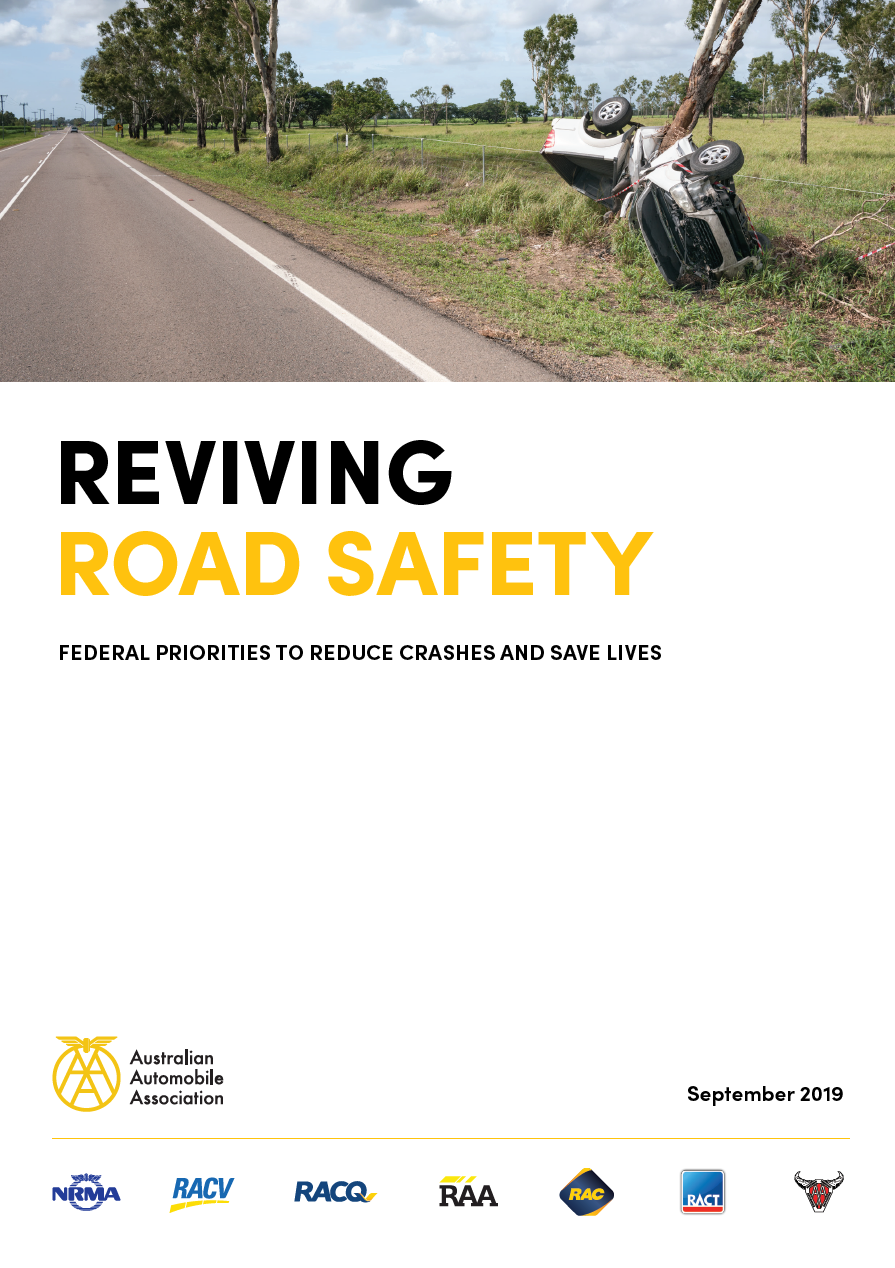Australia lacks detailed, reliable and consistent road safety data in many key areas. Eight years after the NRSS began, almost a quarter of the Strategy’s goals cannot be measured.
We can’t manage what we can’t measure.

Australia has suffered a lost decade in the management of road safety.
It is now clear that about half of the targets set by the National Road Safety Strategy 2011-20 (NRSS) will be missed and many still cannot be measured. There are a number of road safety measures that are worse today than they were when the NRSS was agreed in 2011.
The Australian Government’s own Inquiry into the National Road Safety Strategy’s failings found that strong national leadership will be essential if we are to turn things around.
In response to the Inquiry’s findings, the Australian Government commissioned the Review of National Road Safety Governance Arrangements, which released its final report in August 2019.
Its first key finding was that: “The Australian Government has not provided sufficiently strong leadership, coordination or advocacy on road safety to drive national trauma reductions.”
Reviving Road Safety aims to identify the road safety interventions that can start to shape a future role for the Australian Government.

Australia lacks detailed, reliable and consistent road safety data in many key areas. Eight years after the NRSS began, almost a quarter of the Strategy’s goals cannot be measured.
We can’t manage what we can’t measure.

Too many Australian roads are not safe enough.
Despite being the major funder of national infrastructure, the Australian Government doesn’t insist that safety is prioritised in project selection and planning.

Australia’s vehicle fleet is not as safe as it should be, which is costing lives.
Australia has too many older vehicles on its roads, and we are too slow to update and implement new vehicle safety standards.

Australia has not had a single national road safety agency providing leadership and coordination of best-practice interventions, which has resulted in a failure to deliver substantial reductions in road trauma.
Australia now has an Office of Road Safety, but it’s unclear if it will have the resources and genuine authority to deliver a whole-of-government approach to road safety.
The AAA has undertaken extensive consultation with a wide range of experts and organisations. There is a consensus that the Australian Government can make the nation’s roads safer by using its powers and responsibilities in several crucial ways.
The Office of Road Safety coordinates Australia’s road safety data collection, analysis and reporting capabilities. Robust data must be used to inform road safety interventions and this data must underpin measurable targets, transparent reporting and real accountability.
As a matter of urgency, Commonwealth, state and territory governments decide upon a measurement of serious injury and regularly report on it.
The Office of Road Safety administers a national AusRAP hub to maximise the life-saving potential of Australian Government infrastructure investment and meet the agreed policy targets for 3-star and better roads across Australia.
The Australian Government insists on accountability for responsible use of federal infrastructure funding, including reporting and monitoring of post-construction road safety performance.
Road project proposals demonstrate safety benefits that have been quantified by agreed standards.
States and territories that fulfil their National Road Safety Strategy reporting and compliance obligations receive incentive payments.
Australia actively participates in developing United Nations vehicle standards and accelerates implementation of these standards in Australia.
Australia sets targets to reduce the average age of its vehicle fleet – so that unsafe older vehicles are replaced – as well as initiatives that drive progress towards these targets.
The Australian Government supports non-regulatory measures to encourage the latest safety technologies in new vehicles on the Australian market, including via the Australasian New Car Assessment Program, government fleet buying policies and voluntary undertakings by the industry.
The Office of Road Safety:
